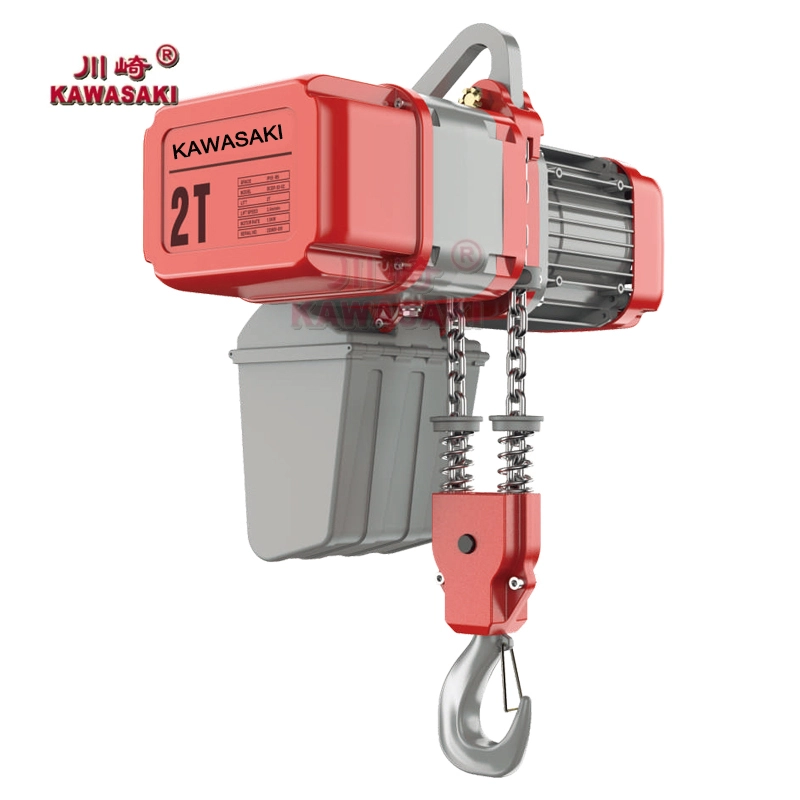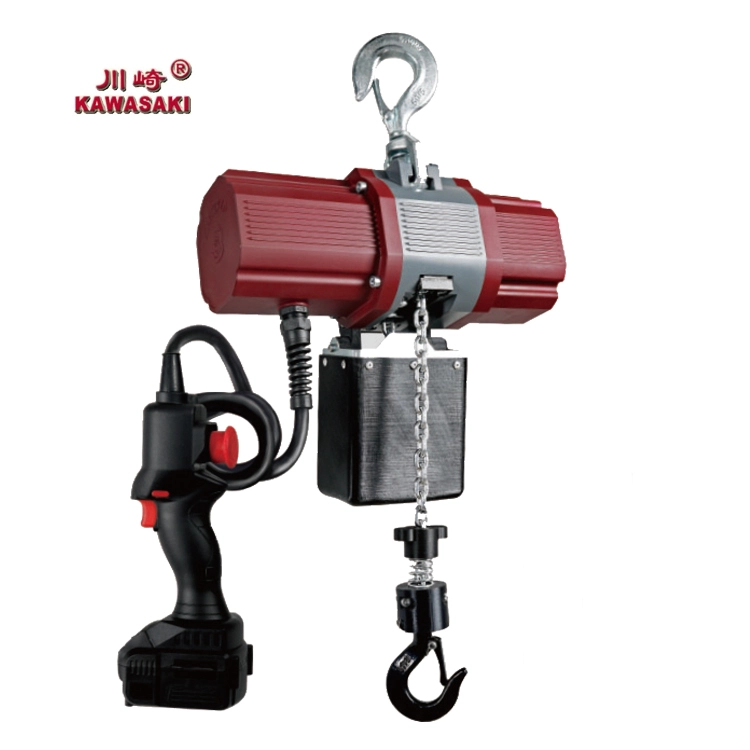Introduction
If you’ve ever tried to move a 2-ton steel beam without the right gear, you’ll know it’s a mix of sweat, swearing, and probably a call to your chiropractor. That’s where an electric chain hoist comes in — a compact workhorse built to lift heavy loads with minimal fuss. In industrial workshops, shipyards, or even large-scale warehouses, this tool is as common as a spanner set.
KAWASAKI electric chain hoists, made by APOLLO’s team in Taiwan and Japan, have been part of this landscape since the mid-80s. These aren’t “just another hoist” — they’re built for reliability, with customization down to the color of the casing or the grade of the chain.
Today, we’ll walk through how to use an electric chain hoist for both vertical lifting (its bread and butter) and the more debated horizontal load control. And yes, we’ll also talk about when not to use it.
What is an Electric Chain Hoist?
An electric chain hoist is basically a lifting machine that uses a motor, gearbox, and load chain to raise and lower heavy objects. The “electric” part means the work is done by a motor instead of your arm muscles. Think of it as trading a manual winch for a high-torque motor with better manners.
Compared to wire rope hoists, chain hoists are generally more compact, easier to move between locations, and in many cases, more affordable to maintain. APOLLO’s KAWASAKI range can handle from a few hundred kilos up to several tons — with CE/GS certification for safety and an ISO-backed quality process behind every unit.
Components and Working Principle
Key Components
- Motor – Drives the chain movement. APOLLO offers single or three-phase motors from 110V to 575V, depending on your site’s needs.
- Gearbox & Sprocket – Transfers power from the motor to the load chain smoothly.
- Load Chain – High-strength alloy steel, often G80 or G100 grade; APOLLO’s can be nickel-plated, galvanized, or blackened for corrosion resistance.
- Brake System – Holds the load steady when you stop lifting. In KAWASAKI hoists, the braking system is designed for stability even in dusty or damp environments.
- Pendant Control or Remote – Your “steering wheel” for the hoist.
How It Works
When you press “up” on the pendant, an electric signal activates the motor. Power goes through the gearbox to the sprocket, which pulls the chain and lifts the load. Stop pressing, and the brake system kicks in, locking the load in place. It’s not magic — just solid mechanical engineering.
Vertical Load Control: Step-by-Step
1. Setup and Attachment
Before anything moves, you need to mount the hoist to a secure anchor point. That could be a beam with a trolley, a fixed gantry, or a crane arm. In a warehouse scenario, I’ve seen a KAWASAKI DCEK hoist installed on a low-headroom beam trolley to maximize lift height in a tight space.
The hoist should be directly above the load’s center of gravity. Off-center lifting is asking for trouble — and by trouble, I mean swinging loads and dented floors.

2. Lifting Process
With the load hooked up and the chain slack taken out, press the lift button. Watch as the chain runs cleanly through the guide into the chain bag — if you hear grinding or see jerky movement, stop and inspect. For tall lifts, use tag lines to keep the load from spinning.
Limit switches will cut power if you hit maximum height, but don’t rely on them as your “normal” stop point. Treat them like the guard rails on a mountain road — good to have, but you’d rather not use them.
3. Safety Measures
- Clear the area under the load — no exceptions.
- Never exceed the rated capacity. If you need more lift, APOLLO offers units up to 20T.
- Keep the chain lightly lubricated; a dry chain not only wears faster but can snag.
Horizontal Load Control: Can You Do It?
Here’s the straight answer: electric chain hoists are made for vertical lifting. Using one to drag a load sideways is not ideal and can stress the gearbox and chain in ways they weren’t designed for.
That said, in real-world sites, light horizontal positioning does happen — for example, inching a suspended engine block into alignment. But if you need to pull a load across the floor, you’re better off with a beam trolley, winch, or manual lever hoist.
KAWASAKI electric hoists can be paired with powered trolleys to handle horizontal travel safely. In one fabrication shop, a 3-ton APOLLO KKBB hoist with an electric trolley moves steel plates the length of the bay before lowering them onto a plasma table. That’s controlled, safe horizontal motion — not dragging something along the ground.
Maintenance and Best Practices
A hoist is only as good as its upkeep. Neglect it, and you’ll find out mid-lift when the brake slips or the chain binds.
- Lubrication – Light oil on the chain prevents corrosion and reduces wear.
- Pre-use Checks – Look over the anchor point, chain links, hook latch, and controls before every shift.
- Annual Servicing – APOLLO’s after-sales team can provide video guidance or on-site checks.
Realistically, in busy environments, a quick “eyes and hands” check before the first lift of the day saves a lot of downtime later.
Why Choose APOLLO’s KAWASAKI Hoists
A lot of companies sell electric chain hoists. APOLLO’s edge is in the details:
- Customization – From explosion-proof motors for oil rigs to custom paint for OEM clients.
- Capacity & Supply – 5,000 chain hoists per month, ready for global shipment.
- Global Reach – Agents across Southeast Asia, plus OEM supply to major equipment brands.
And yes, they’ve been at it since 1986, with an R&D base in Osaka, Japan. In a market where cheap imports come and go, that kind of track record counts.
Conclusion
Using an electric chain hoist for vertical lifting is straightforward once you understand the basics. Horizontal control is possible, but should be approached with the right accessories and within safe limits. Whether you’re moving beams in a shipyard or aligning parts in a factory, the right hoist saves time, labor, and a few headaches.
With APOLLO’s KAWASAKI series, you’re not just getting a machine — you’re getting a setup tailored to your load, your site, and your work rhythm.
FAQs
Q1: Can I use my electric chain hoist outdoors?
Yes, but choose the right spec. APOLLO offers dust-proof, rain-proof, and even explosion-proof options for harsh environments.
Q2: What’s the max height I can lift?
Depending on the model, KAWASAKI hoists can reach tens of meters. Just remember — more height often means more attention to sway control.
Q3: How often should I service my hoist?
Light industrial use may only need annual servicing, but heavy-duty sites should aim for quarterly inspections. A quick daily check before use is always a good habit.

